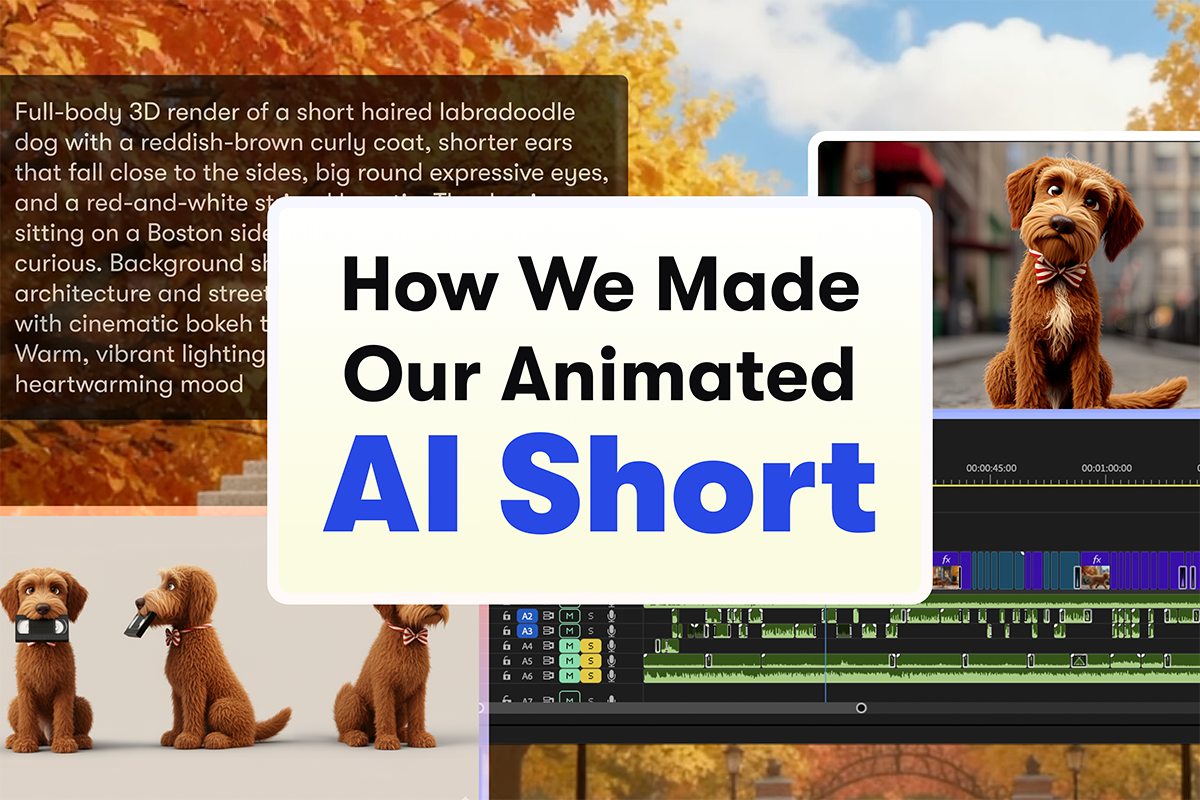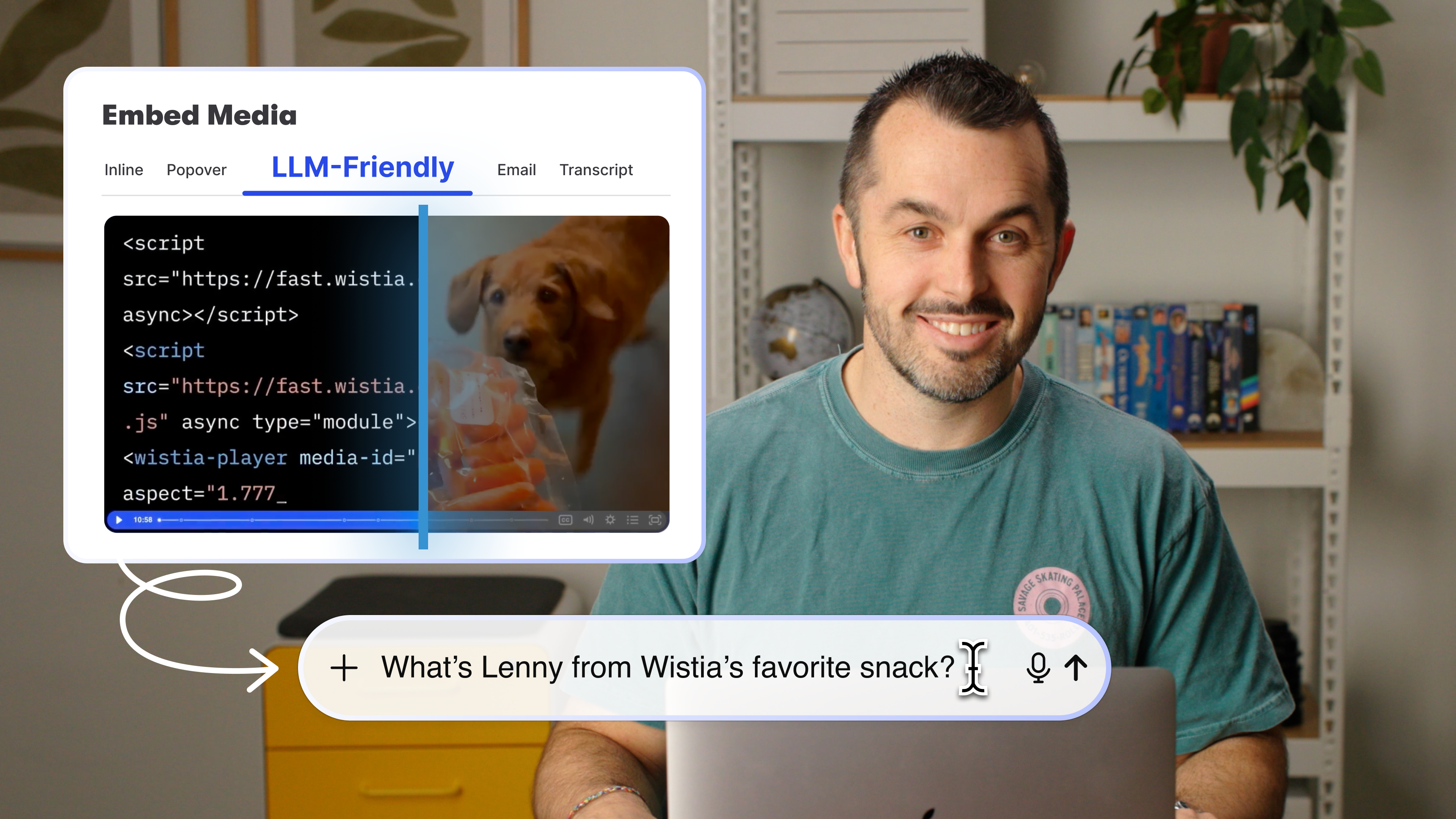What the European Accessibility Act Means for Your Business Videos
See a breakdown of all the EAA requirements related to video and discover an easy way to make your videos compliant.
June 4, 2025
Topic tags

Is your business based in one of the 27 European Union (EU) countries, or do you serve folks in the EU? Either way, accessibility features are no longer just a nice-to-have. They’re a need-to-have.
It’s all because of a law the EU is putting into effect on June 28, 2025 called the European Accessibility Act (EAA).
This law requires businesses to make sure their products and services meet basic accessibility standards. This includes digital content like websites, apps, media players, and videos.
If video is part of your business, you’re in the right place. We’ll break down all the EAA requirements related to video and show you an easy way to make all your videos compliant. (Spoiler: Just host your videos on Wistia; it does all the heavy lifting for you.)
Why you’ll want to stay compliant
Each EU country sets its own penalties for breaking the rules, and in some places it’s considered a criminal offense. It doesn’t matter where your business is based. If you serve customers in the EU, you’re expected to follow the rules in every country where you do business.
The EAA requirements for video
All products and services have to meet the EU accessibility rules laid out in Section I, Annex I. Here’s what that means:
- Information about how to use the product must be available in more than one format (like text or audio) that’s easy to understand and access. For example, if you’re using text as one of your formats, it needs to be presented in an adequate size, font, and color.
- Support services must provide information on the accessibility of the product and its compatibility with assistive technologies.
- The product’s user interface must be easy for people with disabilities to access, navigate, use, and control.
So what does this mean for your videos? 3Play Media explains that the EAA follows a standard called EN 301 549. This standard uses version 2.2 of the Web Content Accessibility Guidelines (WCAG) to set the rules for digital accessibility. That means using some (or all) of these accessibility features for your videos:
- Captions/subtitles: Accurate and synchronized captions for all spoken words and relevant non-speech audio
- Audio descriptions: Narration describing important visual information for folks who are only listening
- Transcripts: Text-based versions of the audio content, including spoken words and relevant non-speech audio
- User controls: Buttons built into the video player that let viewers easily access audio descriptions and adjust the caption size and font
Be sure to use a video player that supports all these accessibility features (more on this later).
Updating backlog videos
Wondering if you have to update the videos you published before June 28, 2025 to meet the EAA’s accessibility requirements? You don’t — in most cases! The only companies that need to update their backlog video content are audiovisual media services like streaming platforms and broadcast television stations, and they have to do it before 2030.
Multilingual support requirements
The EAA doesn’t spell out which languages your videos need to support, but it’s on you to make sure they’re accessible in the languages your audience speaks. So if you’re serving customers in Spain, for example, your videos should have a Spanish version. And make sure your accessibility features, like captions and audio descriptions, are in Spanish too.
Wistia can help you meet the EAA’s video accessibility requirements
Making your videos accessible sounds like a lot of work, but it doesn’t have to be. If you host your videos on the right video platform, you can get it done in just a few clicks.
Wistia comes with all the accessibility features you need to comply with the EAA (and improve the viewing experience for anyone who wants to watch your videos).
Let’s run through the requirements outlined in Section I, Annex I of the EAA and see how Wistia fulfills each one.
The instructions for using your product must be:
Made available via more than one sensory channel
- Auto-generated transcripts and captions
- Translated transcripts, captions, and dubbing (70+ languages)
- Standard and extended audio descriptions (English only)
Presented in an understandable way
- Editable transcripts (that turn into accurate captions)
- Accurate translations and dubbing with regional accent options
- Fast, high-quality playback
Presented to users in ways they can perceive
- Interactive accessibility checklist that helps you make sure your content is accessible in different ways
- Viewer controls for customizing how captions look (font, size, color)
- High-contrast, keyboard navigable, and easily accessible player buttons and settings
Presented in fonts of adequate size and suitable shape, taking into account foreseeable conditions of use, and using sufficient contrast, as well as adjustable spacing between letters, lines, and paragraphs
- Viewer controls for customizing how captions look (font, size, color)
Made available in text formats that can be used for generating alternative assistive formats to be presented in different ways and via more than one sensory channel
- Auto-generated transcripts that can be read by text-to-speech software, turned into captions, and translated into different languages
Accompanied by an alternative presentation of any non-textual content
- Standard and extended audio descriptions available to order
Requirements for user interface and functionality design
If video is part of your product interface, you’ll need a video player that complies with the EAA’s requirements on user interface and functionality design. Well, good news: Wistia’s got you covered, too!
When the product provides for communication, including interpersonal communication, operation, information, control, and orientation, it shall do so via more than one sensory channel; this shall include providing alternatives to vision, auditory, speech, and tactile elements.
- Auto-generated transcripts and captions
- Translated transcripts, captions, and dubbing available for 70+ languages
- Standard and extended audio descriptions available to order (English only)
When the product uses visual elements, it shall provide for flexible magnification, brightness, and contrast for communication, information, and operation, as well as ensure interoperability with programmes and assistive devices to navigate the interface.
- Keyboard navigable video player
- High-contrast player colors
- Visible player controls
When the product uses colour to convey information, indicate an action, require a response, or identify elements, it shall provide an alternative to colour.
- Accessibility checklist that makes sure your player and interaction with the player are accessible to viewers and gives you the ability to alter any player control colors
When the product uses audible signals to convey information, indicate an action, require a response, or identify elements, it shall provide an alternative to audible signals.
- Transcripts that you can edit to include non-speech audio (which will also show up in the captions)
When the product uses visual elements, it shall provide for flexible ways of improving vision clarity.
- Standard and extended audio descriptions available to order






